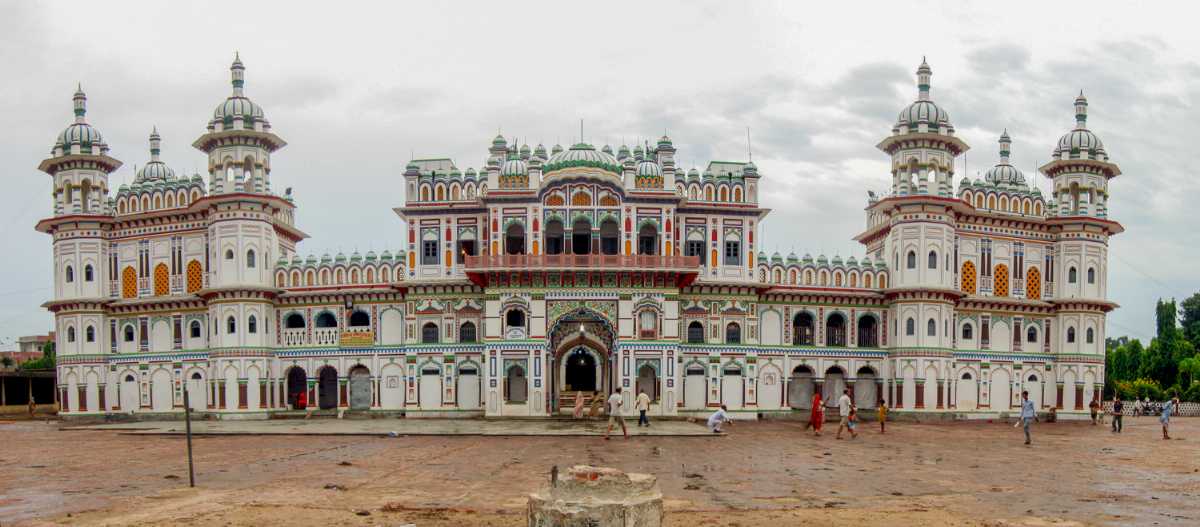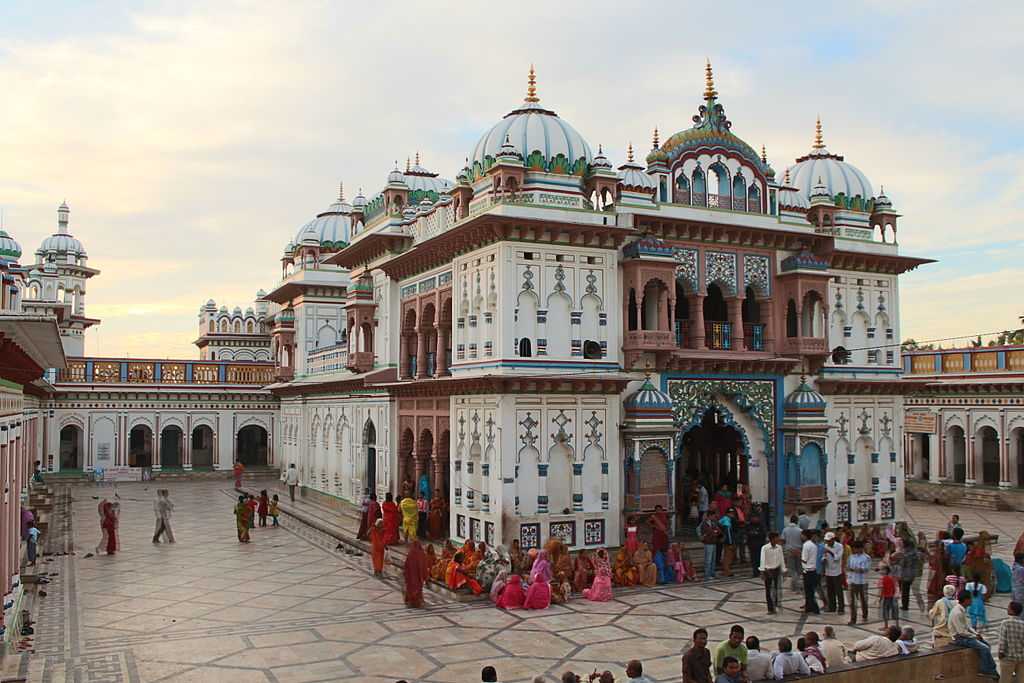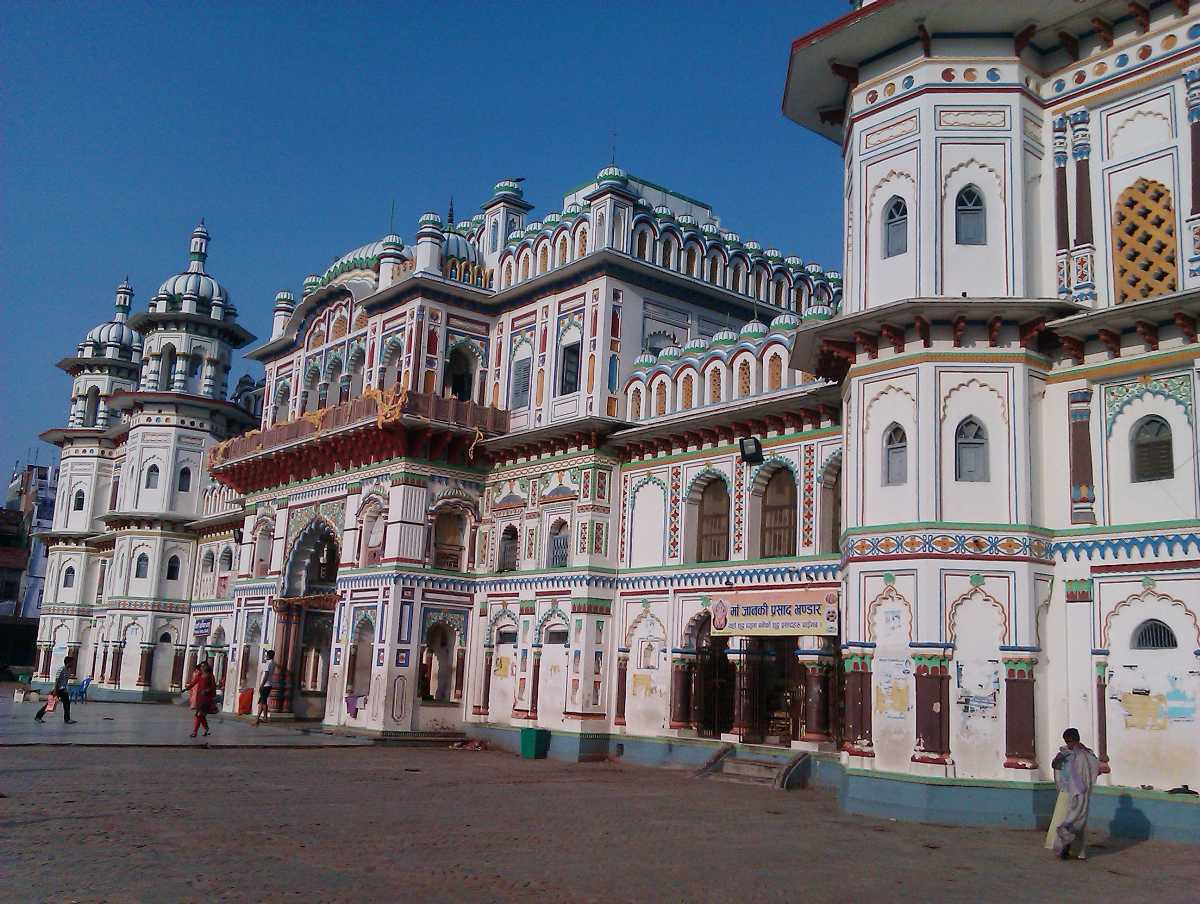Janaki Mandir
Tags : Temple
Timings : 5:30 AM - 11:00 PM and 4:00 PM - 8:30 PM
Entry Fee : No entry fee
Janaki Temple
Janaki Mandir, Janakpur Overview
Dedicated to Goddess Sita, Janaki Mandir is the biggest temple in Nepal located in Janakpur. It is constructed at the place where Goddess Sita was born. The attraction is now considered as a religiously important monument and a heritage site but is still an active temple for devotees. Anybody seeking a slice of the legend of Ramayana must visit the divine Janaki Temple.
The Janaki Mandir is an examplar of Hindu-Koiri Nepali architecture having a stunning white facade. The 3 storied temple is built entirely of stones and marbles, while the 60 rooms inside are adorned with Nepali flag, engravings, paintings, beautiful lattice windows and turrets. The Janaki temple is predominantly thronged by devotees during auspicious occasions and festivals like the Ram Navami, Vivah Panchami, Dashain, Deepavali, and Holi. Pilgrims come in from all around Nepal, Sri Lanka and India to worship the Goddess who is deemed an epitome of courage, purity, selflessness, dedication, loyalty and feminine virtues.
Read More on Janaki Mandir
History and Legend of Janaki Mandir

The magnificent temple was built by the Queen of Tikamgarh, Queen Vrisha Bhanu in 1910 A.D and is also called the Nau Lakha Mandir. 'Nau lakha' translates into nine lakhs and has been derived from the fact that it took 900,000 Rupees to construct the temple at the time. The shrine is often associated with a well-known poet and saint, Sanyasi Shurkishordas who is also the founder of Janakpur. Shurkishordas is said to have preached the philosophy from Sita Upashinad most of his life. It is also believed that he found a golden statue of Goddess Sita at the site in 1657 which led to the faith that Sita lived here most of her life until she was married.
Architecture of Janaki Temple

As you approach the grand temple, you will get a clear view of the building in white with domes, pillars and verandas that resemble a magnificent palace getting the gist of the splendour of the structure even before entering it. Spending a few minutes to admire the external beauty is highly recommended. The glorious temple is a striking, one of a kind fusion of Hindu, Mughal and Koiri type of architectures made entirely of white marble and occupies over 4800 square feet of the area.
To enter, you have to walk through the central 30-metre high arched gate on the ground floor. As you proceed, you will reach a courtyard with the sanctum sanctorum in the centre that houses a grand idol of the Goddess Sita. There are a total of 60 chambers or rooms inside the temple complex that are adorned with intricate lattice windows, coloured glass, beautiful paintings and captivating carvings. There are also smaller shrines in the temple complex. These are called sannadhis and have idols of King Janak, Queen Sunaina, Lord Rama, another statue of Sita, Lakshmana, and Urmila.

After exploring the sanctum sanctorum, the sannadhis and the rooms, as you survey the rest of the complex, you will find a collection of black stones behind the main shrine. These stones are called Saligrams, the sacred black stones that King Janaka used to worship. They are considered to be highly powerful and are mostly found in the houses of devotees who perform all the important rituals without fail. The temple priests allow visitors to offer prayers to these sacred stones and also don't mind sharing their knowledge about the saligrams, the shrine and the legend of Ramayana.
